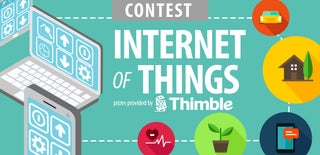Introduction: Smart Home
let the user to control the home from his or her phone and assign actions that should happen depending on time or other sensor readings such as light, temperature or sound from any device in the Home Automation network.
Step 1: What We Proposed : the Solution
Home automation can allow you to make the things that you need and do in your home easier to accomplish. Perhaps you want to control your security system? Or, perhaps you want to voice automate the lights in your home so that you can get into bed and then turn the lights out. Or, perhaps you want to be able to control your sound system from any place in your home. No matter what it is you are looking to accomplish, home automation products are probably available to help you to make it happen. A typical home automation system allows one to control house hold appliances from a centralized control unit. These appliances include lights, fans, air conditioners, television sets, security cameras, electronic doors, computer systems, audio/visual equipment, etc. These appliances usually have to be specially designed to be compatible with each other and with the control unit for most commercially available home automation systems.The project Smart Home Automation, demonstrates a system that can be integrated into a home/building’s electrical system and allows one to wirelessly control lights, fans, and turn on or off any appliance that is plugged into a wall outlet. The system can be controlled from a Bluetooth or Wi-Fi enabled device such as a mobile phone or laptop, while a microcontroller powered box act as the server. Thus the installation cost and hardware cost is kept to a minimum as most users already own the requisite hardware such as a mobile phone and desktop PC.A Bluetooth dongle or a standard Wireless Access Point is used to provide connectivity between the server and the mobile device. The system is capable of detecting when the user enters or leaves the room by measuring the change in environmental thermal equilibrium, and can accordingly turn on or off appliances such as lights and fans. The power supply for each appliance is wired through an electromechanical relay. A number of relays are used depending on the number of appliances to be controlled. All the relays are controlled by a microcontroller. The microcontroller based host acts as the mmain server.. The server can also receive connections over the internet and can be controlled from a remote location. This opens up many possibilities. For example, one could remotely turn on the air conditioner from the office before leaving so that the room is cool before reaching home. Home automation can range in complexity from the simple gadgets and gizmos that provide control over individual components to individual home sub-systems and integrated whole house systems.
Step 2: The Android Application
The application for the android smartphone is wriiten completely inBASIC4ANDROID. BASIC4ANDROID is a BASIC high level language. Basic4android is a simple yet powerful development environment that targets Android devices.Basic4android language is similar to Visual Basic language with additional support for objects.Basic4android compiled applications are native Android applications, there are no extra runtimes or dependencies. Unlike other IDEs Basic4android is 100% focused on Android development. Basic4android includes a powerful GUI designer with built-in support for multiple screens and orientations. No XML writing is required. You can develop and debug with the Android emulator or with a real device (USB connected or over the local network). Basic4android has a rich set of libraries that make it easy to develop advanced applications.The android application so designed is fully applicable of controlling your home. There are a total of six screens including the screen containing the authors name. The application is a little bit voice acknowledged. Whenever you click on the help menus, it tells you about the particular with the voice acknowledgemnt too.

Participated in the
Internet of Things Contest 2016










